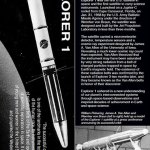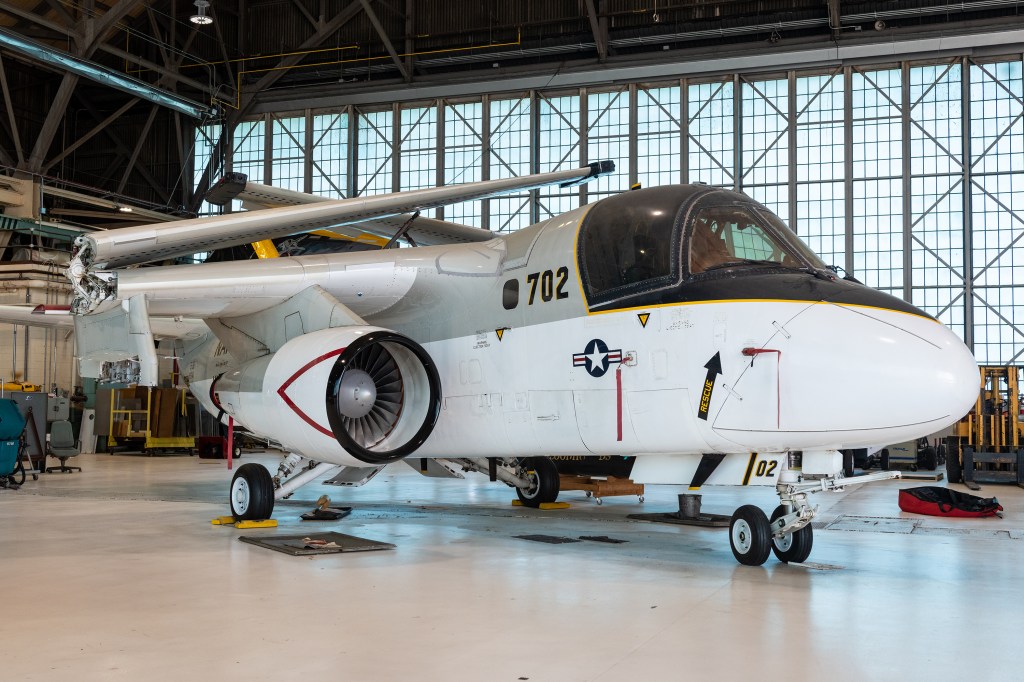Explorer 1
In the mid-1950s the Cold War was running hot. The U.S. and U.S.S.R. each sought to gain an edge over the other with new technologies and weapons developed during World War II and in the burgeoning Atomic Age. The competition to put a satellite into orbit ― a goal of the International Geophysical Year (IGY), which ran from July 1, 1957 to Dec. 31, 1958 ― was particularly intense. Explorer 1 was the first satellite launched by the United States when it was sent into space on January 31, 1958.
Mission Type
Partners
Launch
last transmission
Explorer 1 Overview
Explorer 1 was the first satellite launched by the United States when it was sent into space on January 31,…
Read the Story
The Science
The science section of the satellite, designed by University of Iowa physicist James Van Allen, was relatively straightforward.
The main instruments were a cosmic-ray detection package; internal, external and nose-cone temperature sensors; a micrometeorite impact microphone; a ring of micrometeorite erosion gauges; and two transmitters.

The Launch
Explorer 1 was carried into orbit by a Jupiter-C rocket, launched from Cape Canaveral, Florida, at 10:48 p.m. (EST) on Jan. 31, 1958.
The rocket, developed at the Army Ballistic Missile Agency in Alabama, under the direction of Wernher von Braun, was a modified version of the Redstone ballistic missile, topped by three solid-propellant upper stages

The Celebration
The decision was made that we would make no public comments about the rocket until [its signal] had actually been picked up in California,” then-Director of the Jet Propulsion Laboratory William Pickering said. “And we sat there for an hour-and-a-half. The time came and went, and there was a period of 8 minutes there [before contact], which is the longest 8 minutes I’ve ever spent in my life.
At a jubilant press conference about 2 hours after the launch, Pickering was joined by James Van Allen (center), head of the University of Iowa physics department who designed the science instruments, and Wernher von Braun (right), who directed development of the rocket at the Army Ballistic Missile Agency

The Success
The successful orbit of Explorer 1, launched on a Jupiter-C rocket, made headlines around the world.
The Soviet Union had already launched two satellites in 1957, and the previous U.S. attempt on a Vanguard rocket exploded only a few seconds after liftoff. At the time, many people called the satellite a “moon” or a “man-made moon” because of its Earth orbit. The Huntsville Times, seen here, was particularly proud of the success of the Jupiter-C, as it was made at the Army Ballistic Missile Agency in Huntsville, Alabama.

Story of Explorer 1
On October 4, 1957, the Soviet Union surprised the world with the launch of a 23-inch-diameter, 184-pound ball designated Sputnik…
Read the Story
Studying the Van Allen Belts 60 Years After America’s First Spacecraft
Tick, tick, tick. The device — a Geiger counter strapped to a miniature tape recorder — was registering radiation levels a thousand times greater than anyone expected. As the instrument moved higher, more than 900 miles above the surface, the counts ceased. Scientists were baffled. It was early 1958, the United States had just launched its first spacecraft, and a new discipline of physics was about to be born.
Learn More
Videos and Downloads
Stories of Missions Past: Early Explorers
On September 29, 2011, NASA announced the short list for five potential new “Explorer class” spacecraft. These missions are by…
Read the Story
Explorer 1 — Then and Now: Educator Resources
The educational resources are divided by topics that span the science, technology, engineering and mathematics of this mission and current and future missions resulting from it. Resources include rocketry lessons, computer science activities, 3-D printing resources and reference materials.
Learn More
Fast Facts
Need the quick rundown on Explorer 1? Check out this Fast Facts page.
Learn More about Fast Facts























































